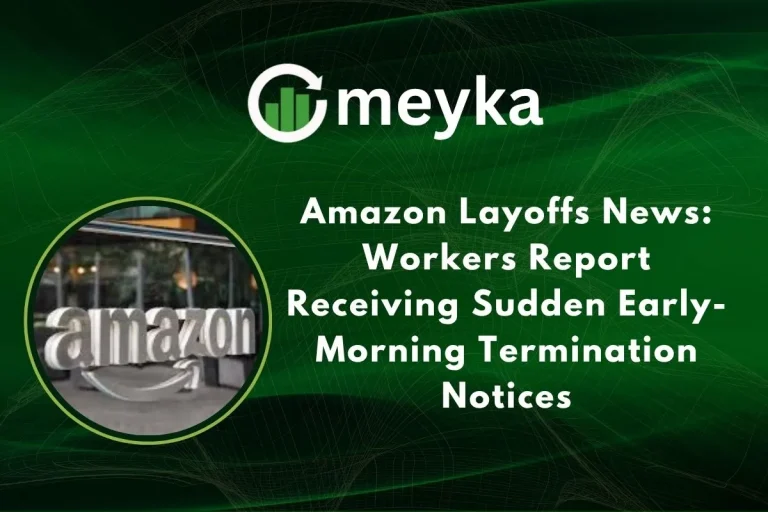Nvidia Auto Division Posts 32% Growth Fueled by Advanced Autonomous Systems
We’re witnessing a major turning point in the auto world, and Nvidia Auto is zooming ahead. In its most recent quarterly report, Nvidia announced that its automotive division brought in $592 million, marking a 32% year-over-year leap. This surge is no accident. It’s being powered by rising demand for self‑driving systems, smart cockpit solutions, and tightly integrated AI platforms. We’ll explain what’s behind this growth, why Nvidia is becoming a central player in autonomous driving, and what the road ahead looks like.
Nvidia’s Auto Division: What It Includes
When we talk about Nvidia auto, we’re not just talking about chips. Nvidia’s automotive portfolio is built around its DRIVE platform, a stack that includes high-performance processors, software, safety systems, and simulation tools.
- DRIVE Orin: A powerful compute chip already used in many EVs.
- DRIVE Thor: The next-generation superchip that’s designed to unify driving, cockpit, and AI workloads.
- DriveOS: Software running on these systems to enable perception, decision-making, and driver monitoring.
- Simulation & Validation Tools: Platforms like Omniverse help simulate driving scenarios to test autonomous features.
Together, these pieces let automakers build not only advanced driver-assistance systems (ADAS) but also future-ready Level 4 autonomous vehicles.
What Drove the 32% Growth?
Surge in Demand for Autonomous Systems
The biggest driver behind the 32% jump is strong demand from automakers for self-driving technology. Nvidia’s DRIVE AGX Hyperion 10 architecture was highlighted by the company as a key tool for building Level 4-capable vehicles. Automakers are increasingly interested in handing over certain driving tasks to machines, especially on highways or controlled routes, and Nvidia’s powerful compute + sensor frameworks make that possible.
Expansion of Partnerships with Automakers
Nvidia isn’t going it alone. The company has forged deep partnerships to bring its vision to life:
- Uber + Stellantis + Foxconn: Nvidia is supplying its Hyperion 10 architecture for an ambitious plan: build a robotaxi fleet.
- Lucid: The EV maker plans a mid-size model with Level 4 autonomy, powered by Nvidia’s DRIVE AGX Thor chip.
- Hyundai: Nvidia is working with Hyundai to build an AI “factory”, combining in-vehicle intelligence, robotics, and smart manufacturing.
These collaborations not only boost Nvidia’s revenue but also strengthen its role in shaping future mobility.
Growth in Smart Cockpit and Infotainment
Nvidia’s systems don’t just handle driving; they also power the in-cabin experience. With Thor and Orin, Nvidia enables powerful digital dashboards, voice assistants, and AI-driven passenger features. As carmakers lean into more “software-defined” vehicles, the cockpit experience is becoming as important as the drive.
Simulation & Software Subscriptions
A big part of Nvidia’s auto business comes from Drive Sim, its simulation platform, and other cloud tools. These let developers test algorithms in virtual worlds before deploying them on real cars. Nvidia’s recurring software model (rather than just one-time hardware sales) helps drive stable long-term growth.
Inside Nvidia’s Advanced Autonomous Systems
Drive Orin: The Current Workhorse
Orin remains Nvidia’s trusted compute engine. It’s already adopted by several EV makers and continues to power driver-assist systems reliably. Its performance and power efficiency make it ideal for today’s autonomous features.
Drive Thor: The Next‑Generation Superchip
Thor is where Nvidia is placing its biggest bet. This platform is built for physical AI, combining perception, decision-making, and even in-cabin intelligence on a single chip. It supports generative AI workloads, meaning future cars could run advanced models like language assistants or on-device predictive systems.
AI Software Stack
Beyond chips, Nvidia’s software is a standout. DriveOS provides tools for perception, path planning, mapping, and driver monitoring. That software is safety-certified, and it’s updated regularly. For automakers, this means they don’t just get hardware; they get a constantly evolving intelligence system.
How Nvidia Stands Against Competitors
In the autonomous vehicle race, Nvidia goes up against big names:
- Qualcomm: Known for mobile chips, but now pushing into automotive.
- Intel / Mobileye: Long-standing player in vision-based autonomous systems.
- Tesla: Uses its in-house compute for Autopilot and Full Self-Driving (FSD).
Nvidia holds a strong edge because of its unified architecture, from data center to car, and its ecosystem. Its simulation tools, cloud infrastructure, and growing software stack make it more than just a chip supplier. But challenges remain: high costs, supply constraints, and reliance on automaker adoption could slow things down.
Market Trends Supporting Nvidia’s Growth
Several trends are lining up in Nvidia’s favor:
- Electric Vehicles (EVs) Everywhere: As EV adoption grows, so does demand for smart computing in cars.
- Regulation & Safety: Governments are pushing for safer, more autonomous driving. AI-based driver-assist and autonomy are becoming more attractive.
- AI in the Car: Cars are no longer just machines; they’re becoming “agents” that learn, adapt, and talk. Nvidia’s compute makes that possible.
- Centralized Compute Architecture: Automakers are shifting to architectures where a central “brain” controls driving, cockpit, and infotainment. Nvidia’s Thor fits this trend perfectly.
Financial Impact and Outlook
Revenue Contribution of the Auto Division
While $592 million is a fraction of Nvidia’s total revenue, it’s growing fast. Analysts expect Nvidia’s auto business to top $2 billion by the end of the year. That means what was once a side business could become a major growth engine.
Long-Term Growth Drivers
- Level 4 Autonomy: As more automakers build L4-ready vehicles, demand for Hyperion 10 and Thor will increase.
- Subscription & Software Revenue: With Drive Sim and software licensing, Nvidia can generate recurring income.
- New Markets: Robotaxi networks (e.g., Uber’s L4 fleet) and autonomous delivery could unlock new revenue pools.
Challenges and Risks
No ride is ever smooth, and Nvidia’s auto journey has some potholes:
- Supply Constraints: High demand for Thor and other chips could lead to production bottlenecks.
- Regulatory Uncertainty: Level 4 and 5 autonomy still face regulatory hurdles around safety and liability.
- Competition: Other chipmakers or in-house automaker solutions (like Tesla) could eat into Nvidia’s share.
- Dependence on EV Adoption: If EV growth slows, demand for high-performance AI compute in cars may also slow.
Conclusion
NVIDIA’s 32% growth is not just a flash in the pan; it’s a clear signal. Advanced autonomous systems, smart cockpit platforms, and aggressive partnerships are fueling this momentum. As automakers lean into AI-defined driving, Nvidia is positioning itself as a central intelligence provider. The future of mobility is not just electric; it’s intelligent, adaptive, and deeply connected, and Nvidia is helping drive that future.
FAQS
Nvidia shares soared because big companies are spending heavily on AI. Nvidia’s powerful chips are in high demand for data centers and generative AI.
Some analysts think Nvidia could reach $250 by 2025, citing strong demand for its new AI chips and steady growth in compute infrastructure.
Nvidia is investing in Anthropic, a leading AI startup, along with other firms, to build up its AI ecosystem and cloud computing power.
Disclaimer:
The content shared by Meyka AI PTY LTD is solely for research and informational purposes. Meyka is not a financial advisory service, and the information provided should not be considered investment or trading advice.






